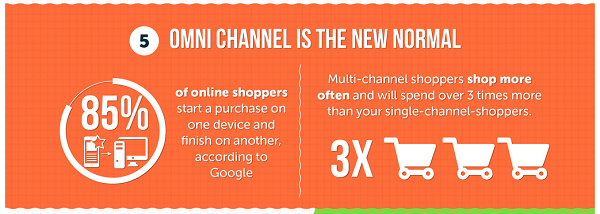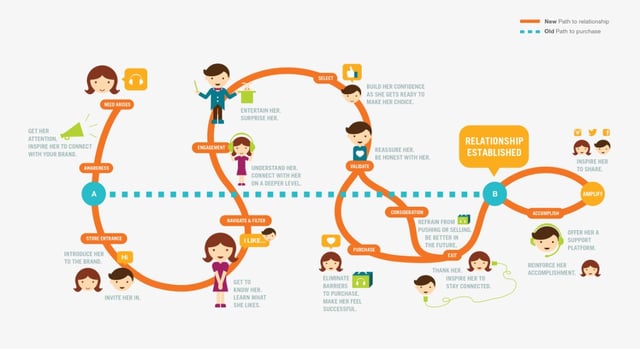Why You Need to Execute a SEO Strategy for Your Outdoor Industry Brand e-Commerce

Building your e-Commerce services for outdoor products is no different from building your regular website: you need to build it with your customers in mind. Who are they, what are they looking for, how can you provide them a solution or product that they want? By understanding the buyer personas you are trying to reach, you can construct an e-Commerce site that helps point them towards the right products. This extends to the kind of content you put on your pages and the way you execute search engine optimization strategies to help your Google ranking. These resources from Shopify (The Beginners Guide to SEO e-Commerce and The Intermediate Guide to SEO e-Commerce) will greatly assist you in making sure you are executing a SEO strategy for your e-Commerce store that attracts and captures customers.
The higher you rank, the more visitors you get, and the better you design your site, the more sales you'll see. It all starts with knowing your audience and buyer personas. According to the August 2017 report from Astound Commerce Insight’s “Global Brand Shopper Survey”, consumers:- 37 percent of respondents expect a more engaging experience on a brand manufacturer’s website than a retailer’s.
- Half of the respondents expect better prices on a brand manufacturer’s website than on a retailer’s website.
If you are an existing outdoor industry brand, you more than likely have some type of e-Commerce presence and e-Commerce fulfillment services. e-Commerce for outdoor industry products is not new. More people are buying online.
What is new, is that every outdoor industry product manufacturer needs an e-Commerce platform that does more than sell. It needs to provide an amazing customer experience with the brand and all of its products across all channels, devices, locations and times.
Many retailers are attempting to differentiate themselves by creating highly curated experiences that combine the personal feel of in-store shopping with the convenience of online portals. These personalized online experiences are powered by artificial intelligence.
Pro Tip: An omnichannel approach offers a solution to one of the greatest challenges facing marketers: how to replicate the scale of traditional mass media, such as television and print, in digital media.

Source: OuterBox
Although you may have "Amazon" on the brain, more than half (55 percent) of shoppers prefer to shop directly with brand manufacturers over retailers, according to Astound Commerce Insights “Global Brand Shopper Survey.” Only a couple of years ago the outdoor industry was debating how to avoid a “streetfight” with their retailers over a direct e commerce strategy. Now you must be charting a process driven digital e commerce marketing and sales strategy that supports your retailer partners while allowing you sell your products the way consumers want to purchase them.
Over a third of consumers report they bought directly from a brand manufacturer’s web site last year and 59 percent already use a brand manufacturer’s website for researching products and usually make their purchase there as well.Out door brands must not only have a viable e-Commerce store they need to maximize their strategic participation across all the e-commerce channel options.
The more you get customers to your own e-Commerce store, the more you will control the experience and create the opportunity to build a direct relationship.

Source: Build Your List
Shopify just created a hands-on, easy to read and understand Intermediate Guide to e-Commerce SEO.
The Shopify list of intermediate action steps to execute to improve your e-Commerce SEO includes:
- Dive deeper into your e-Commerce website and see what is being indexed.
- Have a technical SEO audit of your site run using a tool like SEMrush.
- Build your SEO "word-of-mouth" by creating more high quality sites link to your site.
- Create products and content worth of linking to by others.
- Take back the mentions of your brand and products posted by others.
"The purpose of this off-page SEO tactic is to find opportunities where other websites have mentioned your products, brand name or website by name, but have not linked to your site." - Dat To
If you have not previously checked out their Beginners Guide to e-Commerce, do so. Here is a quick summary of what is covered in this Shopify resource.
- Amazon Suggest and Google Suggest can be great keyword ideation tools.
- Use SEMrush to generate a list of keywords your competitors are ranking for, but you’re not.
- Choosing the right keywords comes down to volume, difficulty, relevancy and intent.
- Make sure your site structure is simple, but easy to scale as your store grows.
- Every page of your site should be as few clicks from your homepage as possible.
- Short, keyword-focused URLs are ideal.
- Reduce thin content pages with long product descriptions.
- Take advantage of Latent Semantic Indexing (LSI) keywords.
Shopify also offers a terrific free downloadable SEO checklist as an easy-to-follow, printable PDF.
Consumers are looking to buy online and they are looking to the outdoor industry brand manufacturer to provide the information they need about products they are interested in to solve their problems. If you don’t already have one in place, then you should consider creating direct-to-consumer e-Commerce channel. This will provide a direct channel you control for delivering customer experiences and providing product information.
Whether you are doing your e-Commerce SEO in-house or are using an outside agency to assist, these guides and checklists from Shopify can assist you in SEO strategy development, execution and accountability.


